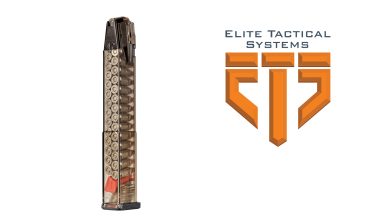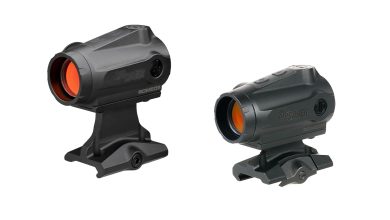Review: Kimber KDS9c
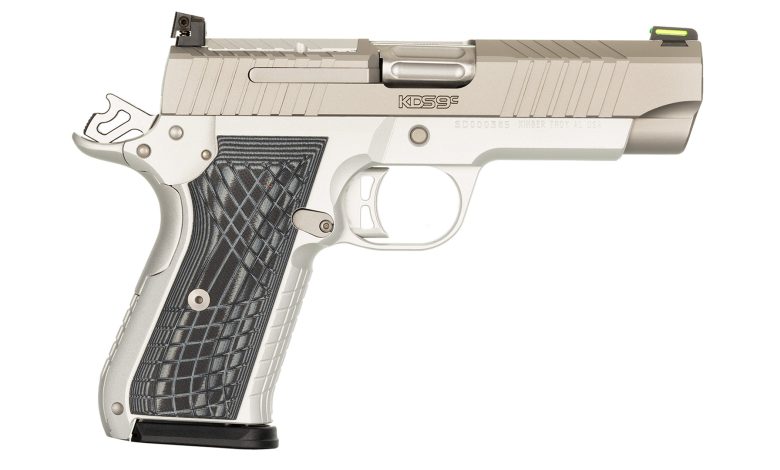
Usually, testing a firearm is a lone endeavor. But, it happened that one of the club members of long standing was at the range when I was testing the Kimber KDS9c, and after looking it over and firing a magazine, he had one question: “How much does this cost?” When I told him, he was ready to buy.
Kimber’s KDS9c is a 9 mm pistol with a double-stack magazine, a single-action trigger mechanism and enough aggressive ergonomic enhancements to qualify as an objet d’art. Starting at the slide, machined out of stainless steel, there’s a tri-top contour and cocking serrations extending up and onto its angled flats. The top rear of the slide is also a removable optics plate, in case you want to mount a red-dot sight on your KDS9c. The top flat of the tri-top has longitudinal grooves from the ejection port to the front sight, to reduce glare and lead your eye to the front sight. Kimber sends the KDS9c out with an adjustable rear and a fiber-optic front sight.
The barrel is integrally ramped, the barrel hood is fluted and the crown is deeply cut for reliability and protection of the rifling. The extractor is a robust external hook, spring-loaded and ready to haul even the most recalcitrant case out of the chamber.
Dovetail mounted and containing a green fiber-optic pipe, the front sight offers excellent visibility • The barrel hood is fluted to reduce fouling and is also aesthetically pleasing • Serrated to reduce glare, the rear sight offers a nice contrast to the front post • A smooth, crisp trigger pull is a hallmark of the 1911, and the KDS9c’s is excellent • Absent from the right side of this KDS9c is an ambidextrous thumb safety • G10 grips offer excellent purchase and good looks • Forward cocking serrations are available for those who use them for administrative purposes • While an ambidextrous safety is available from Kimber, one does not come on the standard KDS9c, meaning that southpaws are out of luck • Two 15-round magazines come with the KDS9c, giving it capacity equal to its polymer-frame rivals; a slightly more capacious 18-round magazine is available separately from Kimber for even more rounds on tap.
Machined out of 7075 aluminum, the frame is given a non-slip pattern on the frontstrap and what on a 1911 would be called the mainspring housing. Its G10 stocks are machined with the same cross-hatch pattern that really can’t be described, but must be seen. The tang area has a 1911-like beavertail, but it isn’t a grip safety. It is also a part to enclose the firing controls. The hammer is a futuristic, oblong homage to the rowel, or commander-style hammer of a 1911, and there is a thumb safety on the left side of the frame. The frame is cut to accept an ambidextrous thumb safety, an option Kimber now offers. The magazine release is reversible, so left-handed shooters can swap it over if they wish. On the left side of the frame, at the expected location, is a slide-stop lever, and the KDS9c locks rearward after the last round is fired. Newer models of the KDS9c sport an accessory rail as well as an ambidextrous safety.
The recoil-spring assembly is comprised of a flat-wire spring, a full-length guide rod and a reverse plug that fits into the recoil-spring tunnel of the slide. The bottom of the frame extends below the side flats of the frame, so what we’d call the mainspring housing protrudes a short distance and acts as a reloading funnel or index point. Magazines drop free of their own weight, and when reloading it is easy to hit the top back of each magazine against the extension as the first step of insertion.
Magazines are steel with a black-epoxy coating and hold 15 rounds. The contour is highly comparable to several other double-stack 9 mm pistol magazines, but the KDS9c magazines are not interchangeable with others. The pistol comes with two magazines (15 rounds in free states, 10 rounds in others) and additional magazines are available from Kimber if you need more. A slightly extended 18-round magazine is also available from Kimber.
The big deal here is the trigger pull. Being the same size and capacity as the Glock G19 (and lighter in weight, despite being steel and aluminum, not polymer) and holding as many rounds, by choosing the KDS9c over the polymer option you gain a 1911 trigger pull. There are many companies that make improved trigger parts for Glocks, but at their best they do not become 1911 triggers. And the KDS9c has a very good 1911 trigger.

This came to the fore when it was time to perform accuracy testing, as the trigger was not a hindrance; in fact, it was a joy. The weight listed may seem ho-hum, but the clean, crisp trigger pull made shooting groups fun, and mowing down plate racks even more fun.
Some might balk at the price, which is substantially more than that of a striker-fired, polymer pistol. But, you only buy once, and with the KDS9c you don’t have to spend any money improving the trigger, nor do you have to spend range time and ammo overcoming a mediocre trigger.
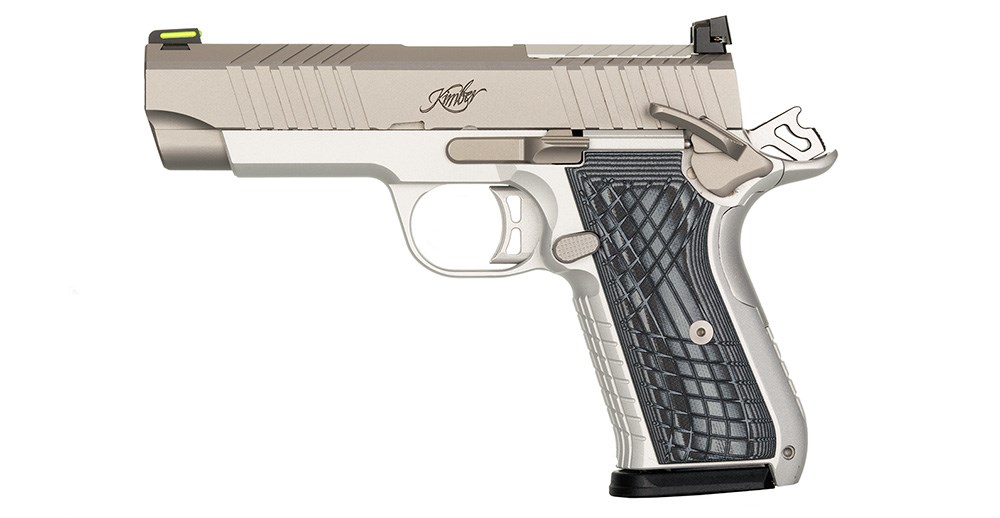
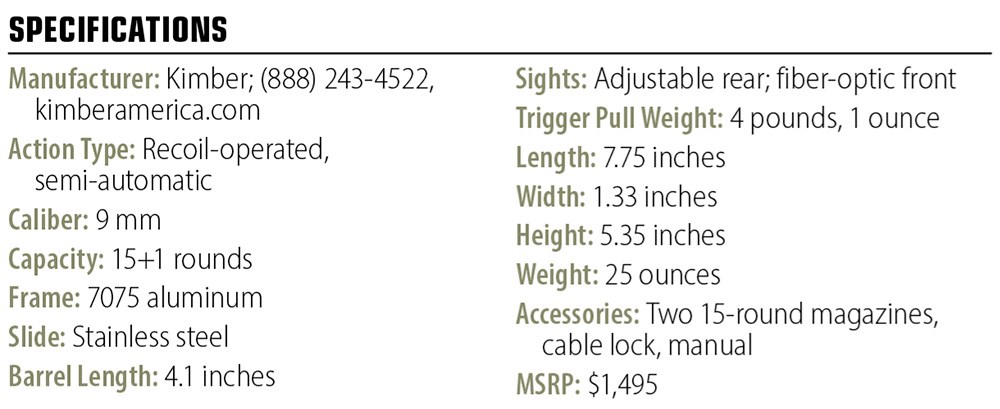
Read the full article here





